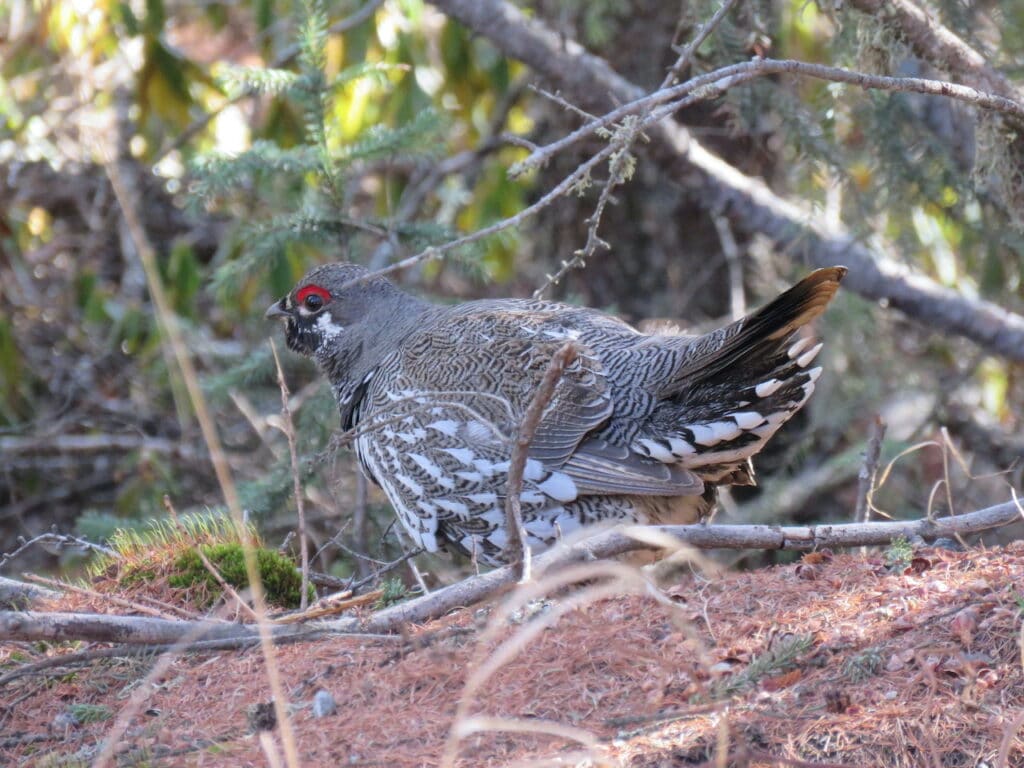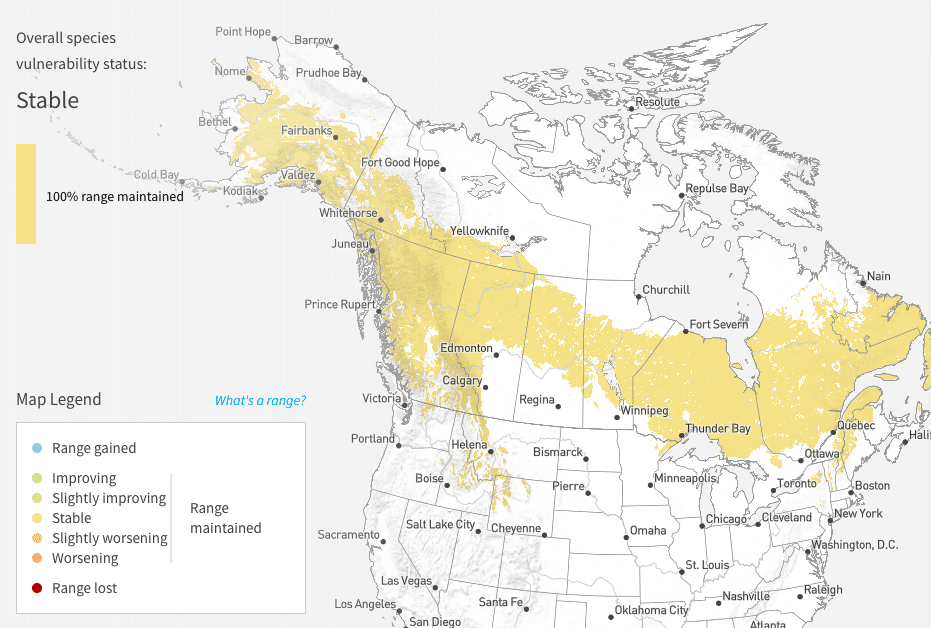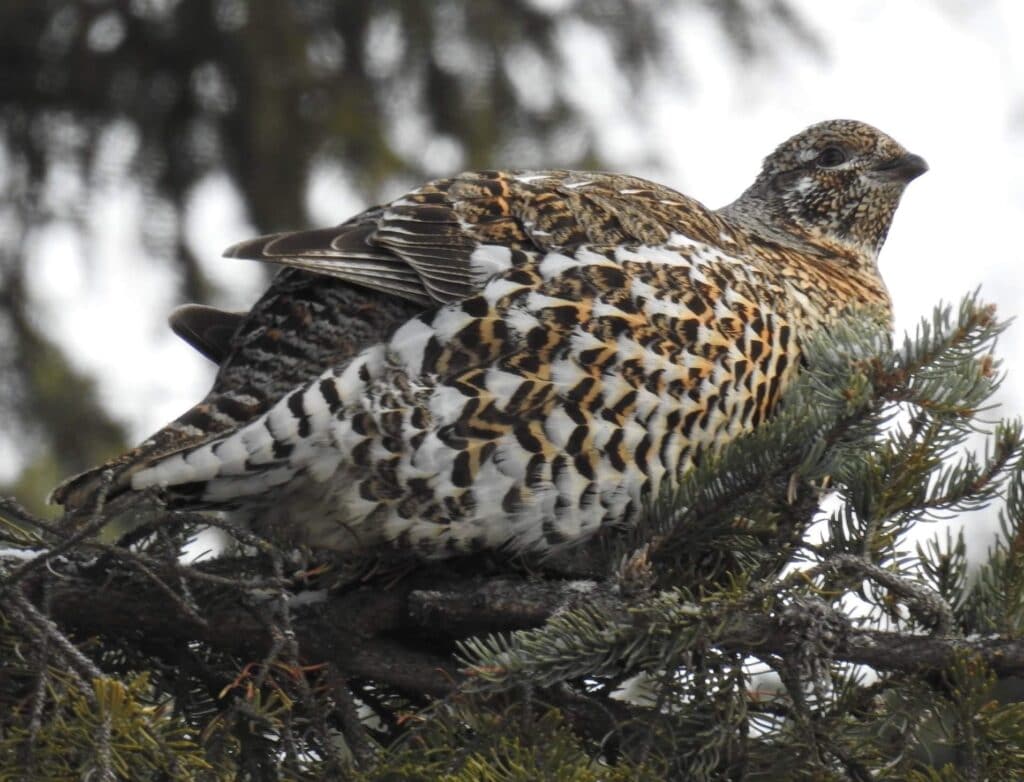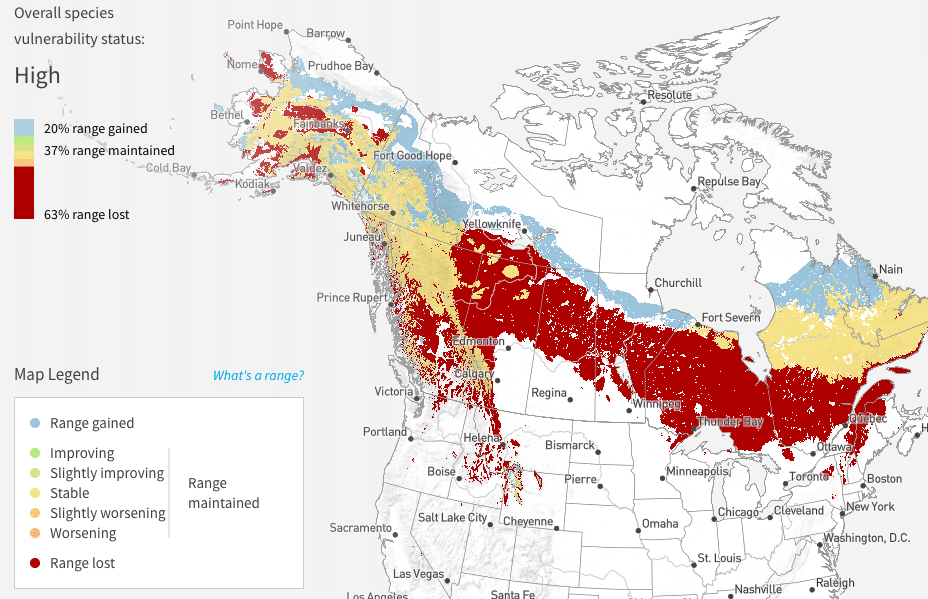
The Minnesota Department of Natural Resources is asking spruce grouse hunters to help with a study of the birds this fall. This is the third season that scientists are requesting voluntary assistance, with hunters asked to send in feathers from the birds they harvest.
The feathers will help a study of the species’ current range and population connectivity, establishing key baseline data as climate change is anticipated to affect the bird in the decades ahead.
The grouse hunting season opened on Sept. 18 and runs through Jan. 2, 2022. Minnesota hunters harvest about 10,000-20,000 spruce grouse each year, compared to 200,000–500,000 ruffed grouse. Last year, the DNR received 111 feather samples from hunters.
Boreal birds
Spruce grouse are a species of the northern forest, found in the northeastern extreme of Minnesota, other northern states such as Michigan and Maine, and across much of Canada.

They only live where they can find abundant supplies of their primary food source: the needles of evergreen trees. Climate change is pushing those forests north, and the DNR study is intended to track how it affects Minnesota’s spruce grouse.
“Hunters who enjoy pursuing these birds are critical to the success of this project and our work to conserve this species,” said DNR grouse research scientist, Charlotte Roy. “Data collection for this project is simple and we hope to receive another 100 to 150 samples in this final year of the two-year project.”
Vulnerable to climate change

As climate change disrupts Minnesota northern forests, it may break up spruce grouse habitat, possibly creating isolated islands and distinct populations of the birds. The feathers collected now will help understand the current gene pool and how interconnected it is across the region. Ongoing observations will track if disconnected populations develop their own unique DNA fingerprint.
Bird advocacy group Audubon considers spruce grouse highly vulnerable to climate change, predicting spruce grouse will lose 50 to nearly 90 percent of its range in North America, depending on how much carbon emissions are controlled and temperature increases are minimized. If significant changes to the energy and transportation systems are not made, almost the entire spruce grouse range could be lost in less than 60 years.

The bird is already designated as imperiled by other states where it is found in the United States. It is considered a Species of Special Concern in Michigan and threatened in Wisconsin. Minnesota, the only Great Lakes state that still allows hunting, has designated it a Species of Greatest Conservation Need because of its susceptibility to climate change.
Spruce grouse rarely fly, preferring to perch and move around in trees, or walk along the ground. In addition to needles and buds, they will also eat insects, plants, and other food. Also known as “fool’s hen,” they are well-known for trying to let their camouflaged feathers keep them concealed, even as humans or other predators approach within a few feet.
Hunters can participate in the study by sending three to five wing or tail feathers to the DNR, along with the hunter’s name and contact information, harvest date, and location where it was killed (preferably GPS points, which will not be made public). Feathers should be sent with one bird per envelope to: Grouse research, 1201 East Highway 2, Grand Rapids, MN 55744.
More information:
- Hunters encouraged to submit spruce grouse feathers for genetics study – Minnesota DNR
- Grouse & woodcock management – Minnesota DNR
- Spruce Grouse (Falcipennis canadensis) – Audubon

